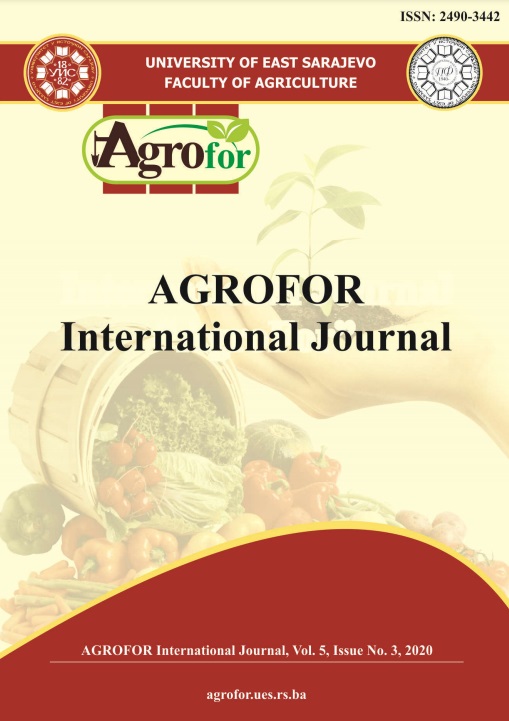PRE-TREATMENT AND INVESTIGATION OF WHEAT STRAW AND HEMP SHIVES FOR BINDER-LESS FIBREBOARD PRODUCTION
DOI:
https://doi.org/10.7251/AGRENG2003080TAbstract
Wood-based panels (WBP) comprise a considerable part in the output of the
European wood industry, GDP, and export. Over 30% of fibreboards and about
50% of other boards used in constructions and carpentry are produced in Europe.
Industrially produced WBP contain synthetic adhesives determining mechanical
properties and being made from oil are often toxic present health risks. Synthetic
adhesives may comprise up to 15 % of the total WBP mass and up to 60 % of the
total production costs. Production costs of WBP are important under the
circumstances of rising oil prices. Moreover, synthetic bonding agents rather often
is a source of emissions of formaldehyde and another problems with advancement
of WBP solutions being offered by synthetic adhesives without formaldehyde
(polymeric methylene diphenyl di-isocyanate – PMDI), or by natural adhesives
from renewables (e.g., tannins or soy flour), or by pre-treatments activating
bonding agents contained in the source material. The availability of raw materials
for WBP is still another problem under the circumstances of the rate of population
growth exceeding the rate of the regeneration of wood resources. Expanding the
diversity of raw materials for production of WBP by utilization of agricultural
residues containing components like wood is one of the possible solutions. The
present study is aimed at development of technology of binder-less fibreboards
made of steam-exploded agricultural residues, such as wheat straw (Triticum
aestivum L.) and industrial hemp (Cannabis sativa L.) shives. Some aspects of the
study, like differences in chemical composition, thermal properties of raw and pretreated
materials potentially affecting binder-less fibreboard bonding, presented.

